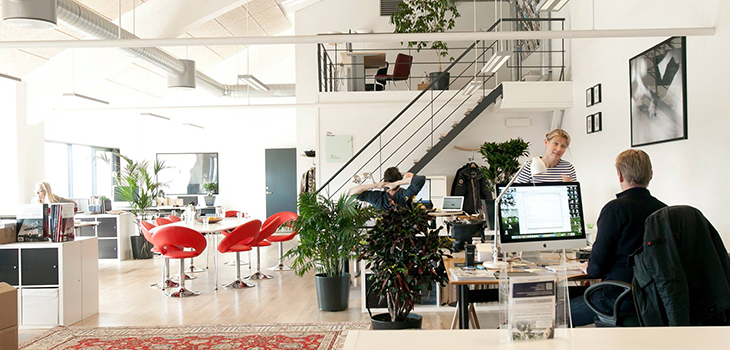
Serviced offices reveal occupancy record rates
Serviced offices, from minor creative shared offices all the way up to the top modern corporate business centres, have never seen a better period than the first quarter of 2016.
This is the main conclusion of a brand new, worldwide survey conducted by MatchOffice, which drew in responses from nearly 700 business centres from 49 countries.
According to MatchOffice analysis, around 80 percent of serviced offices in Europe in the first months of 2016 have maintained or even increased last year's considerably high occupancy rates. The occupancy rate is one of the most important metrics for an office - it determines revenue, signals popularity and can enhance the collaborative work ethic to which many businesses aspire.
More than 60 percent of the serviced offices show rental rates of more than 80 percent. One out of three offices reports occupancy rates of more than 90 percent - very close to full leasing.
"The overall conclusions of our survey fully confirm my personal impressions, when I visit business centres all over Europe", says CEO of MatchOffice Jakob Dalhoff.
"Real estate industry over the past years has been moving in a very positive direction, which has created a significant increase in the demand for and number of new serviced offices. More companies than ever are moving into business centres, and we can only expect this trend to continue throughout 2016."
Increasing demand
The new published study from MatchOffice also shows that half of European serviced offices are maintaining their 2015 price levels. One in three has even achieved an increase.
"Several business centres have been able to charge higher prices, which suggests to our analysts that many large cities (and especially capitals) have seen a greater demand for shared offices compared to the number of rentals offered.
"I know that many operators of business centres are planning to expand their existing office spaces in the near future, or even open new centres in order to match the current demand," Dalhoff says.
The MatchOffice survey shows that 23 percent of Europe´s serviced offices still expect to grow their contractual price within the next six months.
Optimism
The study also stresses that nearly 60 percent of European business centres that responded to the survey have a positive outlook for the rest of 2016.
"It is a fact that the business centre today has performed extraordinarily well, compared to traditional competitors. Over the last ten years, we have been facing a doubling of the number of business centres in Europe."
"A great many modern companies today work mobile, fully dovetailing with the typical concept of business centres," Jakob Dalhoff underlines.
It's common that startups don´t have the confidence to commit themselves to the longer contracts of traditional leases. They might also not be able to invest necessary capital in inventories and IT infrastructures, but just want to focus on their strongest qualities. That’s why they choose the serviced office – a trend which I expect will grow on large scales in future, he adds.
"Shared offices still represent a small portion of the traditional leasing market. As to how big the business centre concept will be able to grow in the years to come, it's pretty hard to say. But personally, I expect a very significant increase," Jakob points out.
Germany as frontrunner
The MatchOffice Industry Survey 2016 takes the pulse of business centres in eight Western European countries, including Denmark.
- In house analysis concludes that:Spain is still showing signs of recovery from deep crisis, with an improved and even more positive outlook compared to the findings from our 2015 survey.
- Capital cities in several countries, e.g. in Sweden, Denmark and Belgium are showing high occupancy rates while the rest of the country is in a status quo.
- Germany has a skyhigh occupancy, which is well above the continental average compared.



